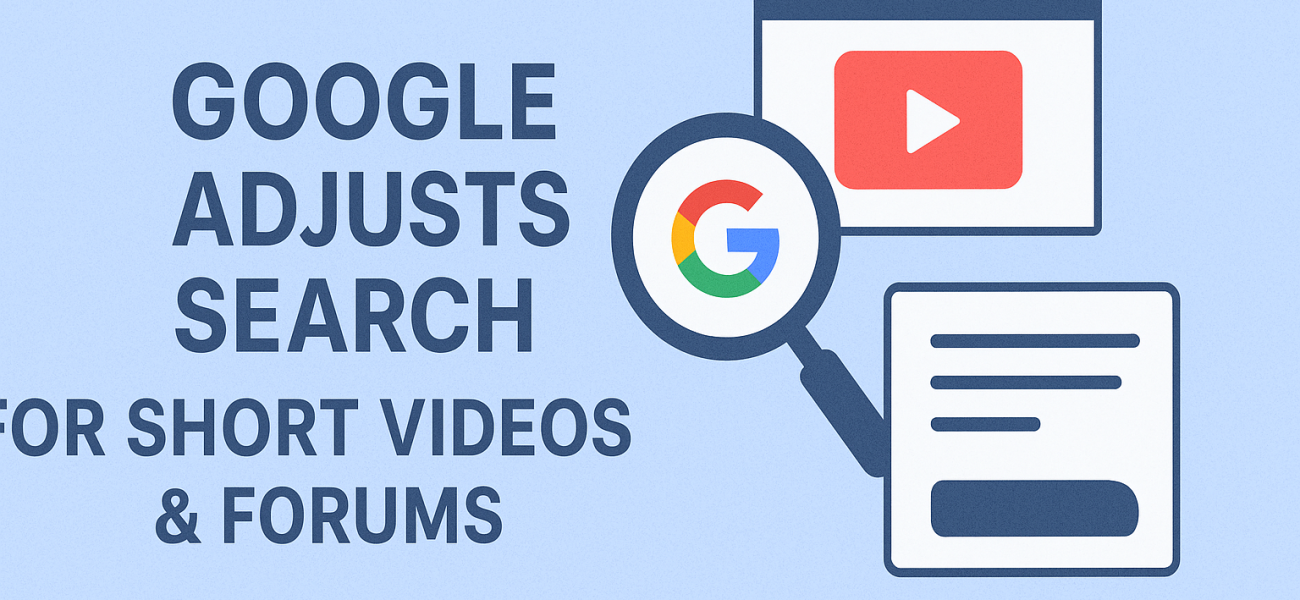Understanding Google’s Shift in Search Rankings
In today’s digital landscape, Google’s search algorithms are constantly evolving. Recently, a significant adjustment to the rankings aimed at surfacing more short-form videos, user-generated content, and forums has transformed how users interact with the search engine. These changes reflect a broader behavioral shift in how users, particularly younger demographics, are approaching their queries.
Behavioral Shifts in Search Preferences
During a recent interview on the Wall Street Journal’s Bold Names podcast, Liz Reid, the VP and Head of Google Search, shared insights into these behavioral shifts. Reid emphasized the increasing tendency of users to seek information from non-traditional sources, stating, “There’s a behavioral shift that is happening in conjunction with the move to AI.” This indicates that users are increasingly turning to platforms like YouTube for cooking recipes instead of conventional sources like newspapers, showcasing the growing influence of visual and interactive content.
The Rise of User-Generated Content
According to Reid, users have gravitated towards forums and user-generated content much more than ever before. This shift underscores the desire for authentic and relatable information translated through the eyes of fellow users rather than polished content from official sources. Reid asserts, “We have to respond to who users want to hear from,” indicating a nuanced approach by Google to curate content that resonates more deeply with the audience.
Competition from Alternative Formats
The implications of these changes mean that websites relying solely on traditional content may face stiffer competition from forum threads and short videos. In some instances, this could lead to fluctuations in web traffic that are not necessarily tied to the quality of content or technical SEO factors. If businesses experience a drop in visibility, it’s crucial to analyze which formats are gaining traction and how user engagement patterns are evolving.
Impact of AI on Campaign Performance
Reid also addressed the influence of AI on advertising performance. While the introduction of AI-based features may redirect some traffic away from ads, she noted that the overall search volume is stable. “The revenue with AI Overviews has been relatively stable… some queries may get less clicks on ads, but it also grows overall queries,” she explained. This perspective aligns with the typical ebb and flow of digital marketing, where shifts in user behavior can balance ad performance through increased search activity.
The Changing Landscape of Online Advertisements
The evolution of Google’s search algorithms also affects how marketers approach advertising. Reid highlighted that many user queries still lack ads entirely. This situation means that many potential customers engage with content without coming across traditional advertisements, which emphasizes the importance of creating valuable, organic content alongside paid strategies.
Enhancing Quality Signals in Content
Another critical point raised by Reid is the necessity of establishing quality over quantity in web content. Google aims to move beyond merely flagging low-value content as spam; it is now focusing on producing richer, deeper materials that engage users. “Richer, deeper material tends to drive the clicks from AI experiences,” she stated, alluding to the essential role of content quality in maintaining visibility and relevance on Google’s search results pages.
Testing and Improving Search Features
Reid also discussed Google’s ongoing commitment to testing its new features and adjusting based on real user feedback. This process—referred to as the evaluate-and-learn loop—involves taking insights from user behavior, piloting new content approaches, and observing how these changes impact user engagement and satisfaction. “You take feedback from what you hear from research about what users want, you then test it out, and then you see how users actually act,” she explained, illustrating how Google continues to adapt to its user base.
Strategizing for Future Updates
The implications of these updates are far-reaching for content creators and digital marketers alike. As Google adjusts its rankings to prioritize a wider variety of content types, businesses must adapt their strategies. This means exploring complementary formats, such as short videos, while also continuing to strengthen their core content offerings. By diversifying content types, brands can enhance their visibility and appeal in an increasingly competitive landscape.
Identifying Impacted Categories
Despite the importance of these updates, Reid refrained from providing specific timelines or metrics regarding the extent of the changes. This lack of detail leaves many in the industry questioning which content categories may be most affected by this shift. Businesses that have experienced changes in traffic should conduct thorough assessments to identify whether user interest has shifted towards forums or video content.
Preparing for the Future of Search
As the digital landscape continues to evolve, staying ahead of these trends is critical. The increase in popularity of user-generated content and short-form videos indicates a significant shift that content marketers must embrace. Whether through visual storytelling or interactive engagement, understanding these changes is vital for sustaining visibility in search rankings.
The Path Forward for Content Creators
For content creators, this means re-evaluating their approaches. What worked in the past may not suffice in the future. Incorporating an element of authenticity and engagement is paramount in resonating with modern audiences. “The best approach is to think like a creator rather than a traditional marketer,” an industry analyst recommends. “Engagement and relatability will win the day.”
Conclusion: Adapting to Google’s Updates
In summary, Google’s recent adjustments to its search ranking algorithms reflect a fundamental change in how users seek information. As we witness the rise of alternative content formats, the importance of adapting marketing strategies will only continue to grow. Embracing these changes enables a competitive edge in capturing audience engagement and achieving campaign performance.

